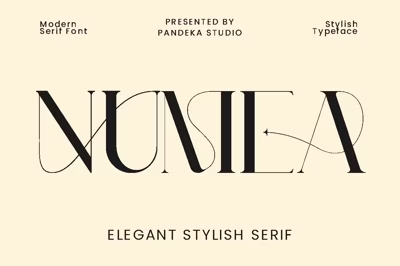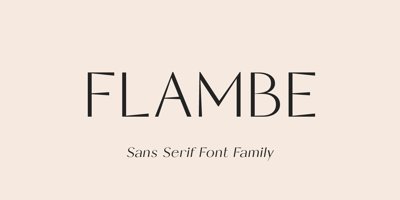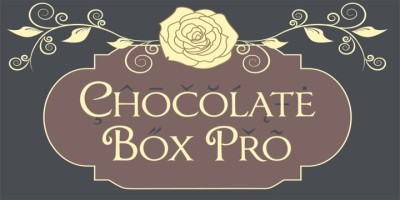2026 Typography Forecast: Fonts That Will Define Design
2026 Typography Forecast: Fonts That Will Define Design
From Variable Fonts to Retro Revivals — What Designers Need to Know This Year
Typography is more than just visual decoration—it’s how brands speak, how interfaces guide us, and how stories come alive. As we look ahead to 2026, it’s clear that typography is continuing to evolve rapidly in response to cultural shifts, technological innovation, and changing user expectations.
This year’s type trends blend nostalgia with futurism, embrace inclusivity, and make room for experimental expression. Whether you’re designing a startup brand, a high-impact editorial layout, or a user interface, here’s your full forecast of the fonts and styles that will define design in 2026.
The State of Typography in 2026
The typography landscape in 2026 is shaped by a few major forces:
-
The normalization of variable fonts across digital platforms
-
A surge in demand for inclusive and multilingual typefaces
-
The rising importance of brand personality in every typographic decision
-
AI-powered design tools pushing boundaries while creators seek more human touches
The fonts we choose today don’t just need to look good—they need to function well across platforms, communicate across cultures, and connect emotionally with audiences.
Trend 1: Variable Fonts Become Industry Standard
Variable fonts—once a cutting-edge novelty—are now essential to modern typography. These dynamic typefaces allow designers to adjust weight, width, and slant within a single file, reducing load times and increasing design flexibility.
Why it’s big in 2026:
-
Improved browser support across Chrome, Safari, and Firefox
-
Greater responsiveness on mobile and tablet UIs
-
Cleaner code and faster performance
Notable Picks:
-
Roboto Flex – a high-performing, Google-backed workhorse
-
Recursive – flexible, creative, and playful
-
Decovar – decorative and dynamic
Designers love variable fonts because they create consistency across brand touchpoints—without needing dozens of font files.
Trend 2: Personality-Driven Typography
Fonts in 2026 are becoming increasingly emotionally intelligent. Brands are ditching sterile, generic type in favor of fonts that feel bold, charming, imperfect, or expressive—whatever resonates with their voice.
Think fonts that:
-
Reflect specific moods (calm, quirky, luxurious)
-
Embrace character and irregularities
-
Help brands “speak” with authenticity
Fonts to Watch:
-
The Seasons – soft, romantic serif with serious elegance
-
Clash Display – edgy and expressive, perfect for rebellious brands
-
Satoshi – minimal yet warm, great for friendly tech
Choosing a font in 2026 is like casting an actor for your script. It has to fit the role.
Trend 3: Smarter Font Pairings
Gone are the days of using one font for everything. Designers in 2026 are mastering the art of smart pairing—combining fonts that contrast in style but harmonize in voice.
Top strategies:
-
Serif for headlines + Sans-serif for body
-
Bold, decorative display font + neutral support font
-
Two fonts from the same family (e.g., Roboto & Roboto Slab)
Winning Combinations:
-
Playfair Display + Inter
-
GT Super + Work Sans
-
Clash Display + Satoshi
Font pairings are the new brand palette—master them, and you shape the tone of every word.
Trend 4: Inclusive & Multilingual Type Design
In a more globally connected, accessibility-conscious world, fonts must be inclusive by design.
What designers look for in 2026:
-
Full script support (Latin, Cyrillic, Arabic, CJK, Devanagari)
-
Characters optimized for legibility (especially on screens)
-
Accessible options for visual impairments
Leading the way:
-
Noto Sans / Noto Serif – supports over 100 writing systems
-
Atkinson Hyperlegible – created for low-vision readers
-
IBM Plex – professional, global, and highly readable
Accessibility is not a feature. It’s a foundation.
Trend 5: Retro Meets Modern (Again)
2026 is embracing bold nostalgia, but with a twist. Think expressive serifs from the '70s, condensed sans-serifs from the early web days, and funky geometric type—reimagined for today’s high-resolution screens and modern branding systems.
Fonts Making a Comeback:
-
Cooper Black – the groovy bold serif we didn’t know we missed
-
Monument Extended – massive and modular, made for attention
-
TT Commons Classic – a modern revival of typographic essentials
Why it works: Retro fonts now appear in minimalist designs, creating contrast and drama without feeling dated.
In 2026, the past isn’t just back—it’s bolder and better.
Trend 6: Fonts for Creators and Content-First Brands
With the explosion of digital creators, newsletters, podcasts, and personal brands, 2026 fonts are increasingly tailored to solo creators and content-first platforms.
These fonts are:
-
Instantly recognizable
-
Easy to use across Canva, Figma, and social tools
-
Balanced between fun and professionalism
Creator Favorites:
-
Epilogue – a versatile sans-serif for modern content
-
DM Serif Display – perfect for thumbnails and headlines
-
Space Grotesk – readable with a tech-savvy feel
Creators want fonts that are plug-and-play—beautiful out of the box.
Bonus: Experimental & Display Fonts Are Thriving
While usability drives most font choices, experimental display fonts are gaining traction in niche sectors like fashion, music, editorial, and branding.
These fonts prioritize expression over legibility:
-
Funky spacing
-
Hybrid letterforms
-
SVG or color font styles
Wild Cards in 2026:
-
Grosteska – sharp, stylish, and ready for magazine spreads
-
Cirka – baroque meets brutalism
-
Gilbert Color Font – multicolored, made for headlines
Think of these as visual accents—not body copy.
Final Thoughts: How to Choose the Right Fonts in 2026
Typography in 2026 is rich, expressive, and strategic. Whether you’re selecting a font for your brand identity or a mobile UI, ask these key questions:
Does this font reflect my tone and values?
Is it readable across all devices and sizes?
Is the license right for my use case?
Can I pair it effectively with another font?
Does it support the languages and accessibility I need?
Top Font Sources for 2026:
-
Google Fonts (Free & Open Source)
-
Adobe Fonts (Included with Creative Cloud)
-
Pangram Pangram (Premium, with trial options)
-
Fontshare (High-quality free fonts)
-
MyFonts (Extensive commercial library)
Final Word: Fonts Shape the Future
2026 is not the year for boring typography. It’s the year for expressive, intentional, and inclusive design. Whether you’re revamping your brand or building your first app, let your type choices tell a story—with purpose, with clarity, and with confidence.
Design is in the details. And in 2026, those details are spelled out in beautiful, bold typography.



